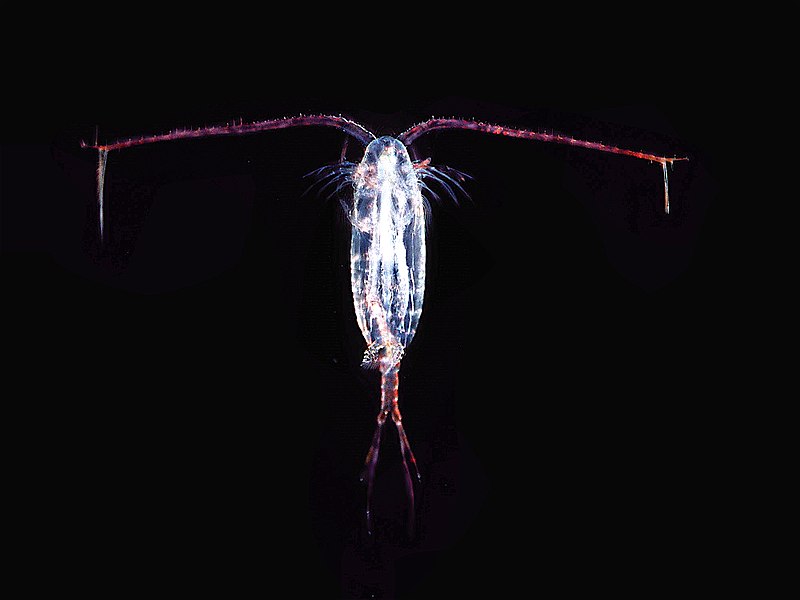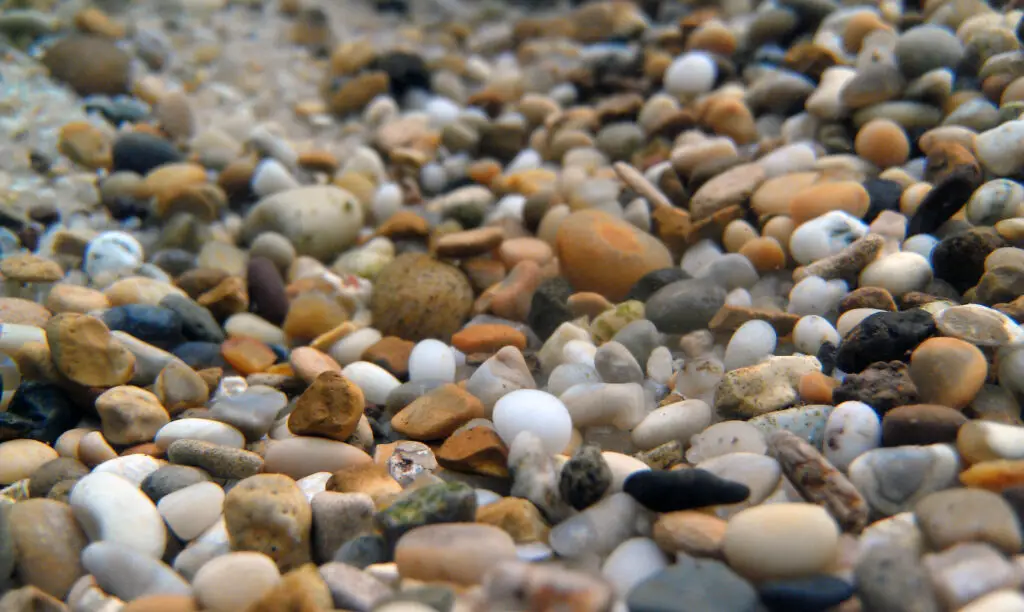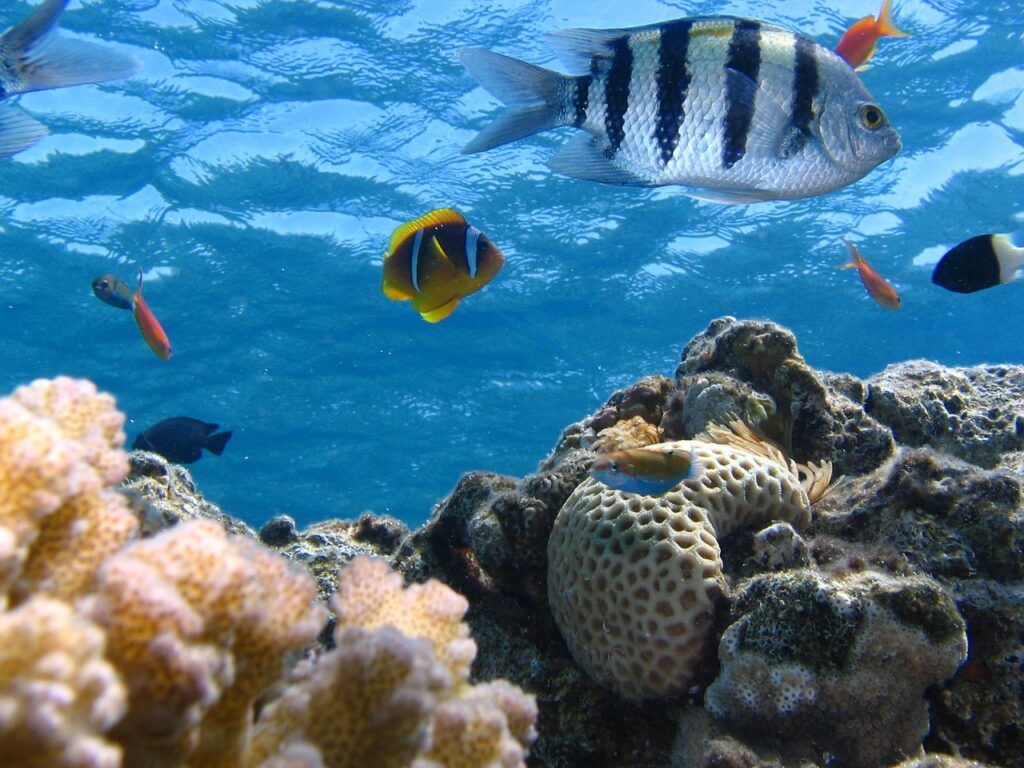Copepods
Copepods are an integral part of the aquatic food chain in the wild; they feed on organic matter and serve as food for many aquatic species. Aquarium hobbyists often use them for these same reasons.
Copepods are microscopic crustaceans that may look like bugs swimming around your aquarium. Are copepods beneficial or harmful to your aquarium and what steps to take if you want to get rid of them forever.
What are copepods?
Copepods are microscopic crustaceans. You will find them in virtually every body of water on the planet, from freshwater to saltwater. You may even find them in puddles! There are over 13,000 species of copepod, and they serve a vital role in the aquatic food chain.
Copepods are herbivorous, meaning they eat plants, most specifically phytoplankton. They also provide a food source for many aquatic inhabitants.
Because there are so many different species, their appearance can differ. Typically, they are between 1 and 2 mm (about 0.08 in) long, with two sets of antennae and a teardrop-shaped segmented body. Copepods are usually transparent and have a single eye in the center of their head. Most lack a circulatory system and absorb oxygen through their exoskeleton.
What do copepods look like in a tank?
Copepods are almost microscopic and very hard to see in an aquarium. Their small size makes them very hard to spot, especially if they are not fully grown, or you don’t have a large bloom. You may notice what appear to be tiny transparent bugs swimming around in your tank. They may even look like dust particles floating around in the water.
Copepods like to hide when they’re not actively feeding, so you may not see them unless you’re looking very closely. They might settle on the rock formations or coral in your tank.
If you’re not sure if copepods are present in your aquarium, there’s an easy way to find out: turn off all the pumps and water flow systems in your tank during the night and shine a flashlight on the glass of your tank. Copepods are attracted to light and will swarm towards the source, making them easy to recognize.
How did copepods get in my tank?
There are several ways copepods make their way into your tank. If you purchased live rock or coral from an aquarium store or a private seller, likely, copepods were already present on these features. They hitchhiked their way into your tank. Live sand and macroalgae can also contain copepods.
Copepods reproduce quickly and in great numbers with the right temperature and a reliable food source. You may not notice them until they’re full-grown and plentiful.
How do I get rid of Copepods?
Many aquarium owners purposefully introduce and cultivate colonies of copepods in their tanks. In the wild, they feed on phytoplankton. But if they are in an aquarium, they will feed on algae, decaying food particles, and other organic matter. They also eat fish excrement, which will help control the nitrate level in your tank. They will even clean your live rocks and coral for you!
Copepods also provide a natural live prey source for many fish. For these reasons, some hobbyists consider them to be beneficial. Certain species of fish and corals may even develop brighter colors when fed a steady diet of copepods.
However, if you have a large population of copepods, they may become a nuisance. Too many copepods in a tank can look unsightly and may even annoy the inhabitants of your aquarium. And although they are technically herbivores, they may make a meal of baby shrimp or fish fry.
If you’ve decided to rid your tank of copepods, or want to limit their numbers, here are some tips to follow.
- Clean the tank – Because copepods feed on decaying plant matter, keeping a clean tank limits their food source. Without a steady food source, they will not be able to reproduce.
- Limit overfeeding – If your fish are not consuming all the food you provide, some unconsumed pieces will settle on the bottom of your tank. The copepods will make a meal out of the leftovers, leading to an increase in their population.
- Introduce predators – If you have too many copepods in your tank, introduce a species of fish known to chow down on copepods to help manage over-populations.
- Change the filter – A filter that isn’t properly functioning will lead to an abundance of decaying material on the bottom of your tank. Since copepods feed on this material, changing the filter may help limit their food source and, in turn, shrink their numbers.
- Change the water – Slowly changing the water in your tank will remove some copepods from the environment. Always use care when changing the water in your aquarium. If you’re new to the hobby, research the best way to do this to prevent any harm to your biome.
- Remove the copepods – Instead of removing and replacing all the water in the tank, you could use a light source to attract the copepods to one area. Once they’ve gathered near the light, carefully siphon out the water in that area. You will suck out the copepods in the process!
- Use a hanging filter – If cleaning and controlling debris doesn’t work to rid your tank of copepods, you can try hanging a canister-type filter on the side of the tank to filter them out. Use caution when introducing any new element into your tank. Certain aquatic species are delicate, and introducing any new feature into the water can upset the balance.
Conclusion
If you are an aquarium hobbyist, copepods are likely something you will need to deal with eventually. Many people intentionally introduce these microorganisms into a tank to help clean up the waste matter or as a live-prey source for fish. Other aquarium owners may want to rid their waters of what they consider to be aquatic pests.
Learning to recognize copepods and understanding their life cycle will help ensure they don’t overpopulate and become a nuisance in your aquarium.



